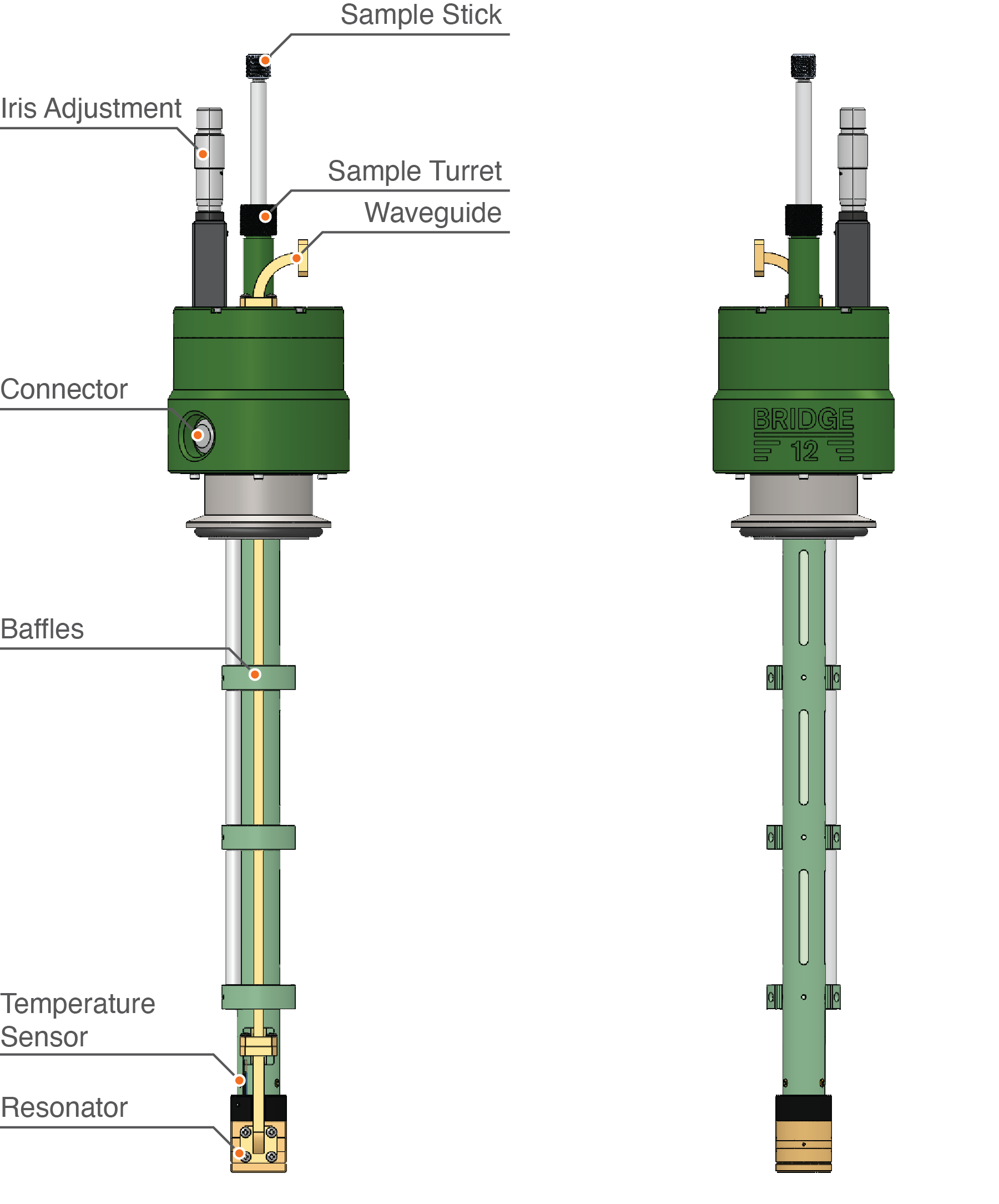Probe Description
Overview
The Bridge12 QLP probe (B12TQLP or QLP) is a probe head for pulsed Q-Band (34 - 36 GHz) EPR spectroscopy. The probe is optimized for pulsed dipolar experiments such as Double Electron-Electron Resonance (DEER/PELDOR) experiments, Relaxation Induced Dipolar Modulation Enhancement (RIDME) experiments, etc.
Pulsed Electron Paramagnetic Resonance (EPR) spectroscopy using high-power microwave pulses or arbitrary waveform generated (AWG) broadband pulses require a large resonator bandwidth (low resonator Q) to avoid distortion of the pulse shape. However, large resonator bandwidth often comes at the cost of a reduced microwave conversion factor. Loop-Gap Resonators (LGR) combine all these desired features together with an excellent field homogeneity across the sample. This is especially important when using AWG generated broadband pulses.
At the heart of the probe is a Loop-Gap Resonator (LGR), with a large conversion factor, and an homogenous B1e microwave field across the entire sample volume to improve the performance of pulsed EPR experiments. The resonator is the ideal choice when using pulses generated by an Arbitrary Waveform Generator (AWG).

Bridge12 QLP Overview
An overview of the Bridge12 QLP probe is given in the figure shown above. For low-temperature measurements, the probe can be operated inside a cryostat. The Bridge12 QLP is compatible with commonly used cyrostats, such as the Oxford Instruments cryostat model CF935.
The main features of the probe are:
- The resonator
- Integrated temperature sensor
- Baffles along the length of the probe
- Electrical connector to connect the temperature sensor to a controller
- The sample holder turret
- WR-28 Waveguide connection
- Iris adjustment
Optical Access
Optical access to the sample location for e.g. light/laser irradiation is possible in several different ways:
- Through the sample holder/stick (for fiber access only).
- Free-space access through the bottom of the resonator.
- Free-space access perpendicular to the sample axis (please inquire with Bridge12 about this option).
If you like to use an optical fiber to irradiate the sample using the sample holder/stick (option 1), please contact Bridge12 at info@bridge12.com for further information.
Temperature Sensor
The Bridge12 QLP probe has a built-in, calibrated Cernox temperature sensor. The connector is located on the top of the probe. Please use the cable that came with the probe to connect the probe to the temperature controller.
More information about the pin-out can be found in the section Temperature Sensor.
What’s next?
- Learn about Connecting the Probe.